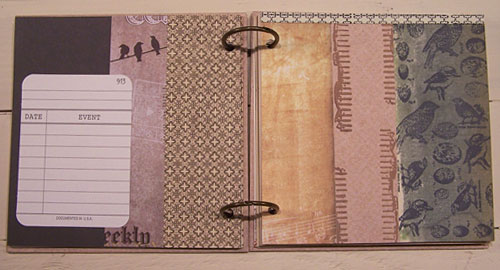
Would you like to make an Easter basket that you can cut apart and bury in the garden when you’re done with it? If growing conditions are right you might even be able to grow some wildflowers!
Tools and Supplies
Biodegradable Easter Basket Template
Laminating sheets (optional)
Scissors
Pencil
Cardstock
Folding tool
Masking tape
Plantable seed paper
Rubber stamps
Rubber stamping ink
Clean scrap paper
Yes Paste
Piece of cut-up credit card
Stiff, short-bristled paintbrush (can be an old one – it’s for spreading glue)
4 clothespins or clips
Small hole punch
Raffia
Gift basket shred
Make the Template
- Download and print out the Biodegradable Easter Basket template.
- Laminate the parts for durability if desired, and cut out.
Make the Basket
- Trace the piece labeled “cardstock piece” on cardstock, and cut out. Make folds where indicated.
- Cut a 3″ x 4″ piece from clean scrap paper to use as a mask. Make a loop from masking tape and use it to temporarily tack down the mask piece to what will be the bottom of the basket.
- Rubber stamp the basket sides.
- Remove mask, and fold up the sides. Apply Yes Paste to tabs and press to the insides of the basket. Hold tabs with clothespins or clips until the glue dries.
- Trace the piece labeled “seed paper piece” onto a piece of plantable paper. Fold at the base of the basket. At the top of the flaps, fold in the opposite direction to make a liner.
- Spread Yes Paste onto the inside bottom of the basket, and press liner into the bottom.
- Spread Yes Paste onto underside of flaps, and press into place on the outside of the basket.
- Cut out a piece of cardstock or seed paper that is 1″ x 8.5″. If using cardstock, stamp it with the same color you used on the bottom of the basket.
- Cut out a piece of contrasting color seed paper that is .5″ x 8.5″. Glue this strip down the center of the 1″ wide strip to make your handle piece.
- With a small hole punch, make holes in lower part of basket and handle piece where indicated on the template.
- Line up holes and glue handle to basket. Hold in place with clips if necessary.
- Take egg tag template and place on back of seed paper. Trace around with pencil and cut out. Punch two holes in egg where indicated on the template. Fold in half.
- Thread raffia through 1/2 of the basket starting at the outside by one of the handles. Leave some trailing ends of raffia. Take another piece of raffia and thread the other half of the basket. Run one of the raffia pieces through the egg shaped tag. Tie ends of raffia together in a bow at the outside of the basket where the handles connect.
- Fill with compostable gift basket shred and goodies, and you’re done! After you’re done with the basket, if you want to you can bury it in your garden and if growing conditions are right you might get some new wildflower plants from the seed paper!


























